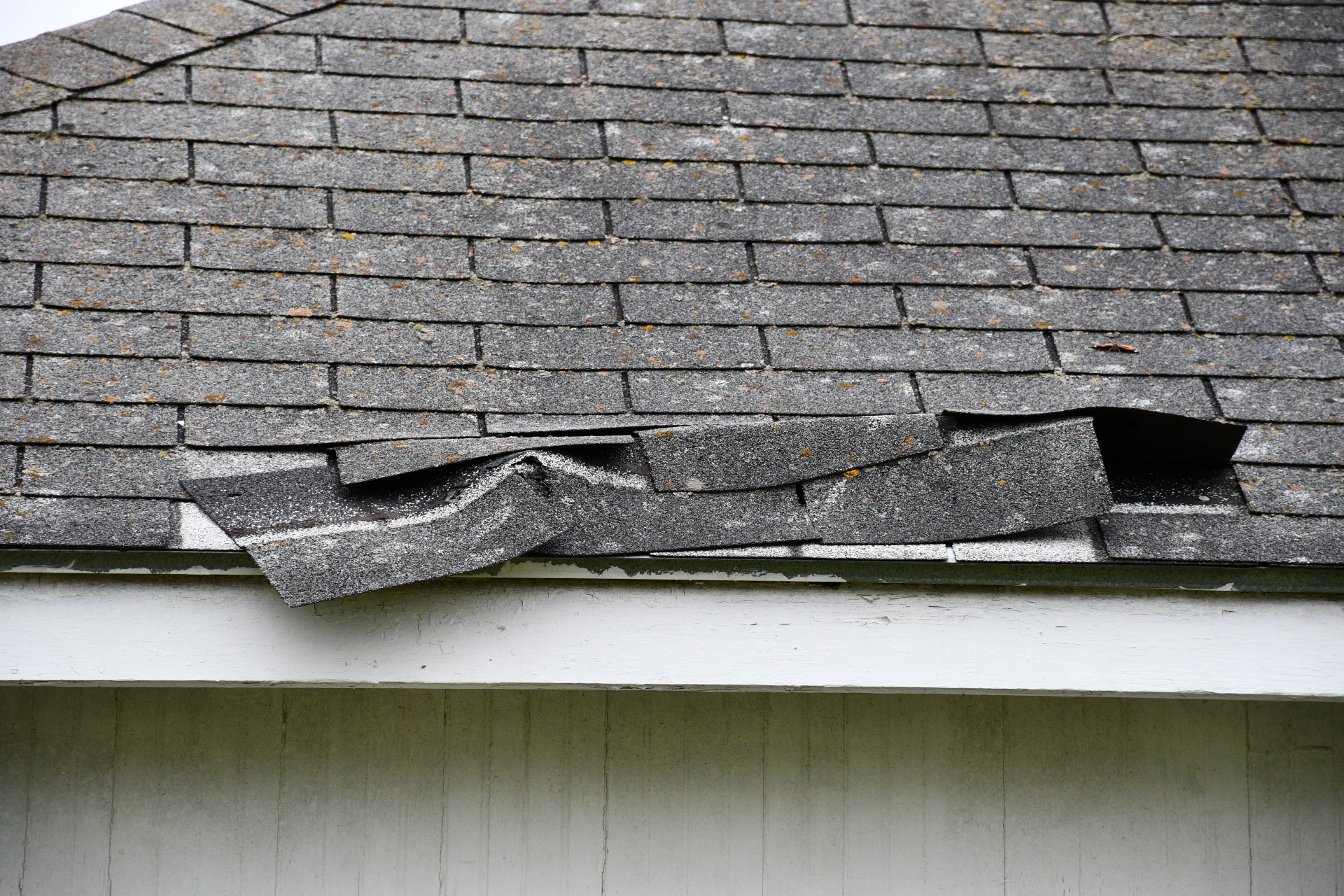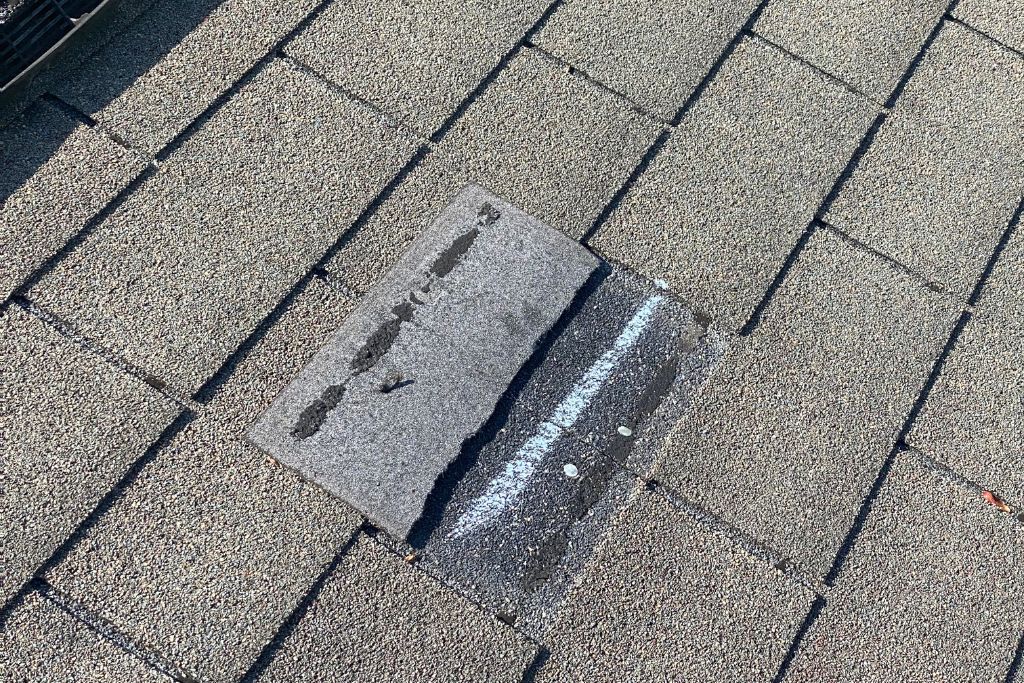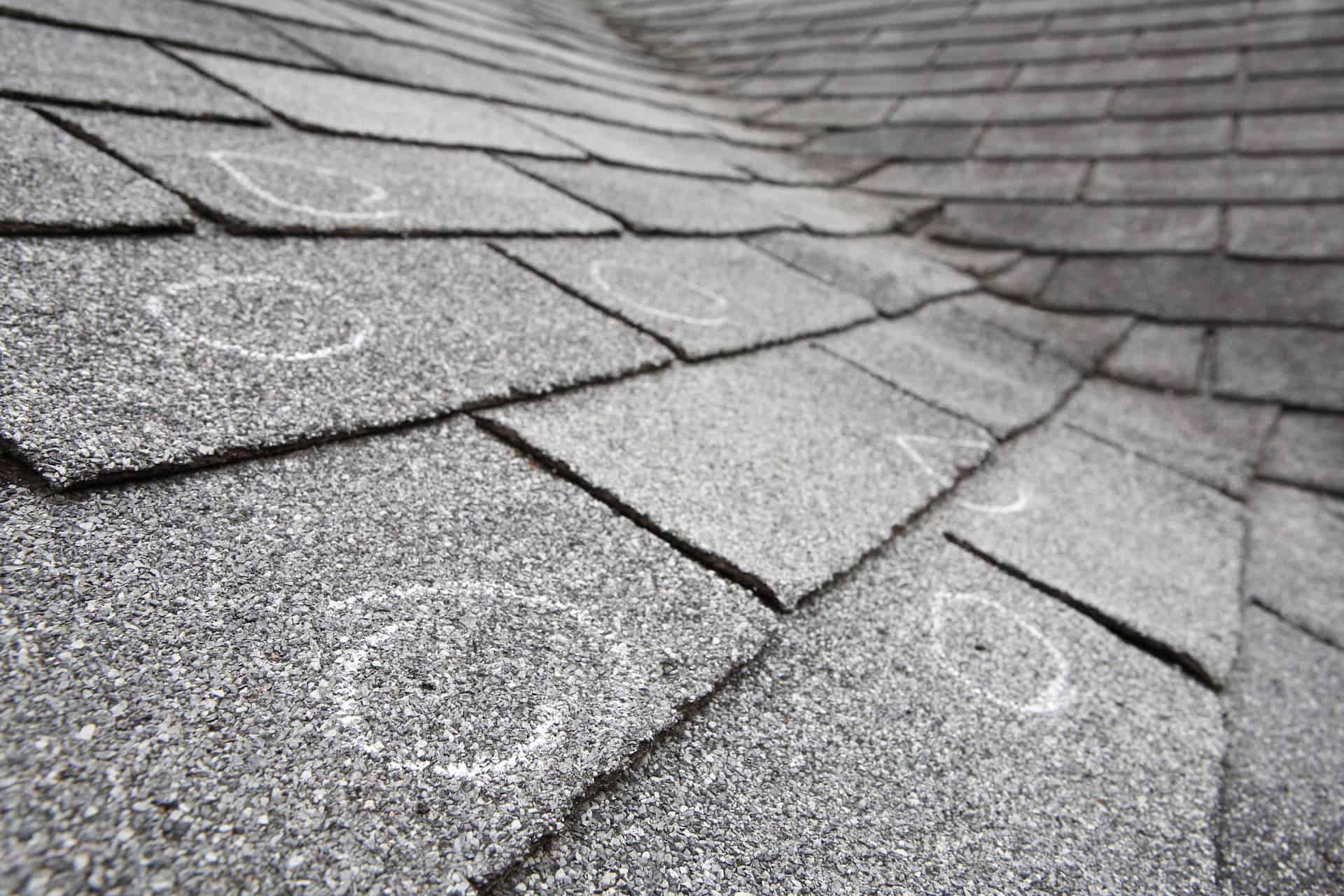ROOF INSPECTION REPORT
Generated by MyAIReports.com on October 15, 2023
AI-Powered Professional Reports
Report #RF-2023-10150092
PROPERTY DETAILS
Property Address:
123 Maple Avenue
Anytown, CA 92345
Property Type:
Single-Family Residential
Year Built:
2005
Roof Age:
Approximately 12 years
Roof Type:
Asphalt Shingle, Multi-level
Square Footage:
Approx. 2,400 sq. ft.
INSPECTOR INFORMATION
Inspector Name:
Michael Rodriguez
License #:
CA-RCI-7801234
Inspection Date:
October 12, 2023
Inspection Time:
10:30 AM - 12:15 PM
Weather Conditions:
Clear, 72°F, Winds 5-10 mph
Contact Info:

Property Overview - Front Elevation
EXECUTIVE SUMMARY
High Priority Issues (Require Immediate Attention)
- Multiple cracked shingles identified on south-facing slope
- Improper flashing installation around chimney causing active water intrusion
- Damaged ridge venting system compromising attic ventilation
Medium Priority Issues (Address Within 3-6 Months)
- Granule loss observed on approximately 30% of roof surface
- Minor ponding in valleys after rainfall
- Several loose shingles on west-facing slope
Low Priority Issues (Monitor and Address During Regular Maintenance)
- Algae growth beginning on north-facing slope
- Minor debris accumulation in gutters
- Potential for increased wear along drip edges
Overall Assessment
The roof is in fair condition overall but requires several repairs to address existing damage and prevent further deterioration. The estimated remaining service life is 3-5 years with recommended repairs, or immediate replacement may be considered as a cost-effective alternative to extensive repairs.
DETAILED FINDINGS
| Area | Condition | Severity | Notes |
|---|---|---|---|
| Roof Surface - South | Multiple cracked and damaged shingles | High | Approximately 15-20 shingles need immediate replacement |
| Chimney Flashing | Improper installation, signs of leakage | High | Complete flashing replacement recommended |
| Ridge Venting | Damaged sections, reduced airflow | High | Replace entire ridge vent system to restore proper ventilation |
| Roof Surface - Overall | Granule loss, surface deterioration | Medium | Affects approximately 30% of total roof surface |
| Valleys | Minor ponding, debris accumulation | Medium | Clean and monitor, potentially reinforce waterproofing |
| Roof Surface - West | Loose shingles, wind damage | Medium | Resecure and replace damaged sections |
| Roof Surface - North | Algae growth, discoloration | Low | Professional cleaning recommended |
| Gutter System | Debris accumulation, minor clogging | Low | Clean gutters and install gutter guards |
| Drip Edges | Initial wear signs, properly installed | Low | Monitor during regular maintenance |
INSPECTOR TIP:
When documenting roof conditions, always include specific measurements or counts (e.g., "15-20 shingles" rather than "several"). This precision helps homeowners and contractors better understand the scope of needed repairs and provides more accurate documentation for insurance claims.
PHOTO EVIDENCE

Photo 1: Damaged Shingles (South Facing)
Multiple cracked and curling shingles requiring immediate replacement.
Severity: High | Location: South slope, near ridgeline

Photo 2: Severe Granule Loss
Significant granule loss exposing base material to UV degradation.
Severity: Medium | Location: Multiple areas, primarily west slope

Photo 3: Wind Damage
Shingles lifted and damaged by recent wind exposure.
Severity: Medium | Location: West slope, corner sections

Photo 4: Hail Impact Marks
Evidence of past hail damage with multiple impact points.
Severity: Medium | Location: Various areas across roof surface
INSPECTOR TIP:
Always capture multiple angles of the same damage to provide comprehensive documentation. Include close-ups for detail and wider shots to show context and location. When possible, include a ruler or other measurement tool in at least one photo to establish scale.
VOICE NOTE SUMMARY
Voice Note #1 - Overall Assessment
"I'm currently on the south-facing slope of the roof at 123 Maple Avenue. The homeowner reports occasional leaking during heavy rainfall. I can confirm significant issues with the shingles in this area. Multiple shingles are cracked, curling, and showing advanced wear. The granule loss is substantial, indicating the roof is in the latter stages of its useful life. The chimney flashing is improperly installed, which is likely the primary source of reported leaks. This will require complete removal and proper reinstallation. Overall, while repairs are possible, the extent of deterioration suggests replacement might be more cost-effective in the near term."
Recorded: Oct 12, 2023 at 10:45 AM | Duration: 1:32
Voice Note #2 - Attic Inspection
"I'm now in the attic space examining the underside of the roof deck. There are visible water stains along the south wall, confirming our suspicions about the chimney flashing. The staining pattern suggests this has been an ongoing issue for some time. The decking itself appears structurally sound with no significant rot or damage, which is good news. Ventilation is insufficient due to the damaged ridge vents we observed from outside. Temperature in the attic is approximately 15 degrees higher than outside ambient temperature, indicating poor air circulation. Recommend complete ridge vent replacement as part of overall repair strategy."
Recorded: Oct 12, 2023 at 11:30 AM | Duration: 1:45
INSPECTOR TIP:
Voice notes are an excellent way to document observations in real-time while your hands are occupied or when you're in difficult-to-access areas. Always begin each voice note by stating your location on the property and specific area of inspection. Include specific measurements, temperatures, and observable conditions that might not be captured well in photographs.
RECOMMENDATIONS
Option 1: Comprehensive Repair (Estimated Cost: $4,200 - $5,800)
- Replace damaged shingles on south and west-facing slopes (approximately 200-250 sq. ft.)
- Replace entire chimney flashing system with proper materials and installation techniques
- Install new ridge venting system to improve attic ventilation
- Clean and treat algae-affected areas on north-facing slope
- Clean gutters and install gutter guards to prevent future debris accumulation
- Apply protective coating to areas with granule loss to extend service life
Estimated remaining roof life after repairs: 3-5 years
Option 2: Complete Roof Replacement (Estimated Cost: $12,500 - $16,000)
- Remove existing roofing material down to decking
- Inspect and repair any damaged decking (additional cost if needed)
- Install new underlayment with ice and water shield in valleys and perimeter
- Install new architectural shingles (recommended: CertainTeed Landmark Pro or similar quality)
- Install proper flashing at all roof penetrations and transitions
- Install new ridge venting system for optimal attic ventilation
- Replace gutters and downspouts with properly sized system
Estimated new roof life: 25-30 years with manufacturer warranty
Professional Recommendation
Based on the overall condition of the roof, its age, and the extent of the identified issues, a complete roof replacement (Option 2) is recommended as the most cost-effective long-term solution. While repairs are possible, the limited remaining service life even after repairs makes replacement the more economical choice over a 5-year horizon. Additionally, a full replacement would address all current issues simultaneously and provide peace of mind with a new manufacturer's warranty.
BEST PRACTICES & INSPECTOR TIPS
Roof Inspection Methodology
- Ground Assessment: Begin with a 360° ground-level assessment to identify obvious damage and access points.
- Safety Check: Assess roof pitch, material condition, and weather before climbing. Use appropriate safety equipment.
- Systematic Inspection: Inspect each roof plane methodically, moving from ridge to eave in overlapping paths.
- Detail Focus: Pay special attention to transitions, penetrations, valleys, and edges where leaks commonly originate.
- Interior Verification: Always inspect the attic and interior ceilings for evidence of water intrusion to correlate with exterior findings.
Documentation Best Practices
- Comprehensive Photography: Take overview shots of each roof section, followed by medium and close-up shots of specific conditions.
- Measurement Inclusion: Include a measuring tool in damage photos to document size/scale.
- Cardinal Directions: Note the orientation of each roof section to correlate with weather exposure patterns.
- Voice Notes: Use real-time voice recordings to document observations while maintaining safe positioning.
- Damage Marking: Use non-permanent chalk to mark damaged areas for easier contractor reference.
Common Inspection Errors to Avoid
- Overlooking Transitions: Wall-to-roof transitions and roof-to-roof transitions are critical inspection points frequently missed.
- Ignoring Subtle Signs: Small blisters or minor granule loss can indicate larger underlying issues.
- Weather Conditions: Failing to account for recent weather when assessing damage patterns.
- Inadequate Sampling: Checking only obvious damage areas rather than inspecting the entire roof system.
- Flashings Focus: Inadequate attention to flashing details which are the most common leak sources.
Effective Client Communication
- Prioritize Issues: Clearly distinguish between immediate concerns and monitoring items.
- Visual Aids: Use annotated photos to help clients understand technical issues.
- Plain Language: Explain technical terms and provide context for industry-specific terminology.
- Cost Ranges: Provide realistic cost estimates with ranges rather than specific figures.
- Timeline Guidance: Offer clear timeframes for when repairs should be addressed.
PROFESSIONAL DEVELOPMENT TIP:
Stay current with roofing technology and materials by attending manufacturer training sessions and industry conferences. Many manufacturers offer free or low-cost certification programs that can enhance your expertise and credibility. Document continuing education in your reports to demonstrate commitment to professional standards.
MAINTENANCE RECOMMENDATIONS
Seasonal Maintenance
- Clean gutters and downspouts (Spring and Fall)
- Remove debris from roof surface and valleys
- Trim overhanging branches
- Check for animal nests or activity
- Inspect attic ventilation performance
Annual Inspection
- Check for loose or damaged shingles
- Inspect all flashing for proper seal
- Examine sealant around roof penetrations
- Look for signs of moisture in attic
- Verify proper attic insulation coverage
After Severe Weather
- Inspect for wind-lifted shingles
- Check for hail damage (dents, granule loss)
- Examine for water intrusion points
- Verify gutter attachment and function
- Document damage for insurance purposes
Important Note
For safety reasons, homeowners should consider hiring professionals for roof maintenance, especially on steep or high roofs. Ground-level inspections using binoculars can identify many issues, but comprehensive assessment requires proper safety equipment and training.